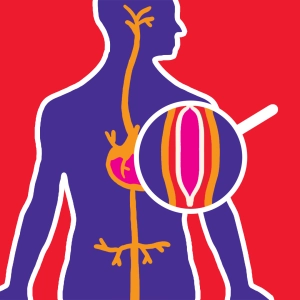 Video: Angioplasty
Video: Angioplasty
When an artery is narrowed by a large fat deposit on its internal wall (an atheroma plaque) the nourishing flow of blood is slowed down, or even blocked.
Consequences: downstream organs (heart, brain for example) are no longer adequately oxygenated and irrigated. An emergency intervention is needed.(…)
Angioplasty enables us to re-establish blood flow without having to operate on the patient. Let’s take the case of a coronary artery: the surgeon inserts a guide catheter 2 mm in diameter into the femoral artery. At the end of the catheter there is a small balloon.(…)
Assisted by radiology, he guides the catheter to the narrowed part of the artery.(…)
And then? He will inflate and deflate the balloon several times in order to crush the atheroma plaque and dilate the artery wall.(…)
But reblockage later on is often something to be concerned about.(…)
A prosthesis composed of an inert metal is thus left in the affected region of the artery. This is called a stent.
The stent is generally soaked with a slowly diffusing chemical that reduces the risk of a relapse. We thus speak of an active stent.
